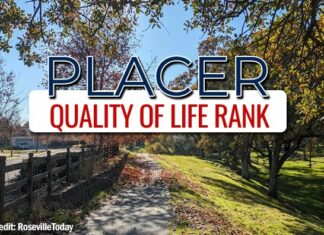Eighteen-year-old Oskari left Russian-ruled Finland and came to New York in 1891. He was one of 350,000 Finns who came to America escaping Finland’s harsh political and economic conditions in the late 19th and early 20th centuries.
In the early 1890s most immigrating Finns found mining and farming jobs in the Great Lakes States, but Oskari headed for Carbon, Wyoming, a coal mining town on the route of the Transcontinental Railroad.
Some Finns fleeing Finland’s Great Hunger of the 1860s had built the rails westward from Omaha and remained in Carbon when rail-laying work ended there in 1869. Oskari joined the Finnish Colony in Carbon to be a coal miner, like his uncle and his father before him.
Carbon’s Finns worked hard in the dangerous and dirty mines by day, and about half drank and brawled in the town’s saloons at night. Oskari joined the temperance half, rising to a leadership position in the Carbon Temperance Society and speaking and publishing articles on the evils of alcohol.
But mine work in Carbon soon slowed, and in 1892 Oskari moved on to Almy,, Wyoming and from there to a dozen other mining and lumber-jacking jobs in the western states. Sometimes he walked to new jobs, but mostly he traveled by train, hobo style, on railcar couplings or sitting on railcar brake-booms with his armpits over two bracing rods. He consorted with other hobos and at each new spot he was active with the temperance movement.
By 1896 Oskari was working the gold mines in Leadville, Colorado. When labor unions stuck the mines there he headed for the San Francisco Bay area, a congregating point for 19th century Finns on their way to California mining jobs, or to fishing jobs on California’s north coast, or to farm labor jobs in California’s valleys.
On the final leg of his trip he jumped a well guarded train at the Sierra summit and hid himself inside an empty refrigerator car, wedged under the drain grate of an ice bin. As the train braked and lurched downhill toward Sacramento, Oskari tossed and bounced about and was on his hands and knees, sick and in pain from the shaking, when the train pulled to a stop at the valley floor. He was short of his destination but he needed time to recover, so he slid the railcar door open, jumped to the ground, and saw that the depot sign read ‘Rocklin’.
From his travels Oskari knew that Rocklin was a quarry town and home to a colony of Finns. He decided to investigate. So he climbed to the hayloft of a nearby stable (Note 1) to sleep until morning. He awoke to men chattering in Finnish as they walked by his perch. He caught up with them and soon realized that he was not a stranger in Rocklin. The Finns knew him from his temperance activities as reported in Finnish-American newspapers. He decided to stay in Rocklin for a few days to look for work. He got a mining job in Offer (Note 2), but he almost died of malaria there. When he recovered he returned to Rocklin to work in Juho Mantyla’s (Note 3) granite quarry.
Oskari worked hard for Mantyla and within 18 months he joined with 3 other Finns to lease his own quarry. Oskari had found a permanent home in Rocklin. But then Oskari met pretty Finnish housemaid Hanna Tyokko. They connected at a dance in 1897 (Note 4) and by Christmas that year they had married. Quarry work was slow that winter in Rocklin and Hanna was homesick for her siblings in Finland, so she helped Oskari decide to abandon his Rocklin quarry investment and head back to New York. In 1900 the couple returned to Finland.
Oskari went into the grocery business in his boyhood hometown, but the depressed state of Finland’s economy and Finland’s subservient status under the rule of Russia’s Tsarist government drew him to politics. He ran successfully for Finland’s Diet in 1907 and by March 1917 he had become Deputy Speaker of Finland’s Cabinet and Finland’s Premier.
As the lead up to Russia’s Bolshevik Revolution was causing chaos in the Russian government in 1917, Oskari led Finland’s fight for independence. Pioneer Temperance Society leader, Western American hobo and Rocklin quarryman Oskari Tokoi saw Russia officially recognize Finland’s independence on December 6, 1917.
Tokoi chose the losing side in the ensuing Finnish Civil War (1918) and escaped to Canada. Later the Finnish Diet pardoned him because of his leadership in freeing Finland from Russian rule. He died in Massachusetts in 1963 and still carries the title of the first Premier of a free Finland. (Note 5)
This article is based on Rocklin, an Early Finnish Community, by Susan W. Hardwick and Sisu, Even Through a Stone Wall, an autobiography by Oskari Tokoi.
.
Notes:
1. This might have been Blackwell’s Stable which was close to the Rocklin rail station and was the scene of the Holmes/Renaldi shootout in 1914. Google ‘Holmes/Renaldi shootout’
2. Probably Ophir
3. Possibly John Mantyla, John owned at least one Rocklin granite quarry and other Rocklin property in the late 19th century.
4. The dance could have been at Porter’s Hall, a popular 1890’s dance hall near the corner of today’s Rocklin Road and Front Street. It could also have been at the now demolished Finnish hall near today’s Rocklin History Museum at Rocklin Road and San Francisco Street. The Finn Hall that we see today on Rocklin Road was the scene of Saturday night dances but it dates only to 1905.
5. History does not record that Tokoi ever returned to Rocklin
(21+ years strong)
Welcome to the brighter side!
Get in front of local customers! 24/7 (365)





















